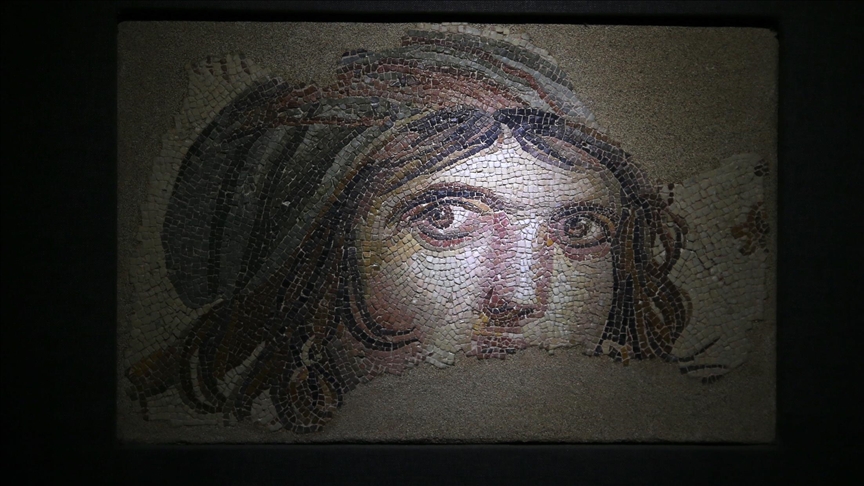

By Anadolu Agency
ANKARA
While many invaluable artifacts, such as those in the prominent Zeugma Mosaic Museum, were left largely untouched in two recent earthquakes, Turkish authorities have declared that restoration and repair work would soon begin for those that took damage in the tremors.
Turkish Minister of Culture and Tourism Mehmet Nuri Ersoy declared that the restoration of historical and cultural sites in nearby Hatay province that were damaged by the massive tremors would begin next month. He also noted that the ministry’s General Directorate of Cultural Heritage and Museums has introduced an emergency disaster prevention plan.
Teams responded immediately to work on damaged parts of museums and ruins across 11 provinces hit hard by the two back-to-back quakes on Feb. 6 and conducted large-scale damage assessment work of the cultural treasures.
In Gaziantep, one of those 11 provinces, the historical Roman-era columns still stand in the ruins of the city of Zeugma. Its famed ancient mosaics have preserved their unique texture despite the earthquakes, while the museum’s favorite exhibits, the 1.6-meter-tall statue of the Roman god Mars and the Gypsy Girl mosaic, were unscathed.
Despite being damaged, the historical Governor’s Office building of Hatay province, which was built 95 years ago and served as a presidential mansion before the province joined Türkiye in 1939, did not collapse. It was evacuated after the earthquakes, which had destroyed its roof and clock.
The urban center of Kahramanmaras, where both earthquakes were centered, suffered widespread destruction due to the strong tremors, with many buildings collapsing in the centuries-old city.
Some major arteries to the heart of the city, home to many historical sites, have been closed off by the rubble of buildings that collapsed in the quakes, which claimed thousands of lives across southern Türkiye.
As debris is removed, however, residents have regained road access to the Grand Bazaar, dating back half a millennium, which itself was nearly unscathed by the earthquakes. In fact, some businesses have started reopening their doors to help people feel like “life will return to normal.”
Not so fortunate, half of the minaret of the 15th-century Maras Grand Mosque, which marks the center of the city, was lost in the disaster, with the falling debris causing some damage near the entrance of the historical mosque.
Daily prayer services have since been put on hold due to the damage, while weekly Friday prayers have been held outside.
Minister Nuri Ersoy also paid visits to the Sarmiye Mosque, Habibi Neccar Mosque, Habibi Neccar Foundation of Cultural Mansions, Grand Mosque, Jewish Synagogue, bazaar, Hatay Parliament Building, Hatay City Museum, and the Necmi Asfurolu Archeology Museum.
The earthquakes also spared the Titus Tunnel and neighboring Besikli Cave, built about 2 millennia ago by slaves to avoid flooding in the Samandag area of Hatay. Home to Antakya, the renowned “City of Civilizations” and home to many cultural treasures, Hatay is one of the provinces hit hardest by the earthquakes.
Many of its mosques, churches, and synagogues, which were among the province’s most notable works, were demolished in the quakes.
Overall, the total number of works assessed in the earthquake region was reported to be 433, with 121 seriously damaged, 66 moderately damaged, and 57 mildly.
We use cookies on our website to give you a better experience, improve performance, and for analytics. For more information, please see our Cookie Policy By clicking “Accept” you agree to our use of cookies.
Read More